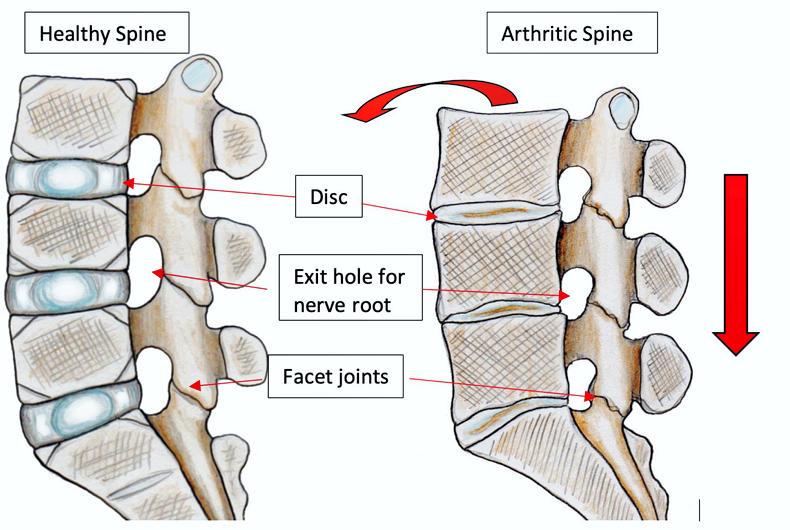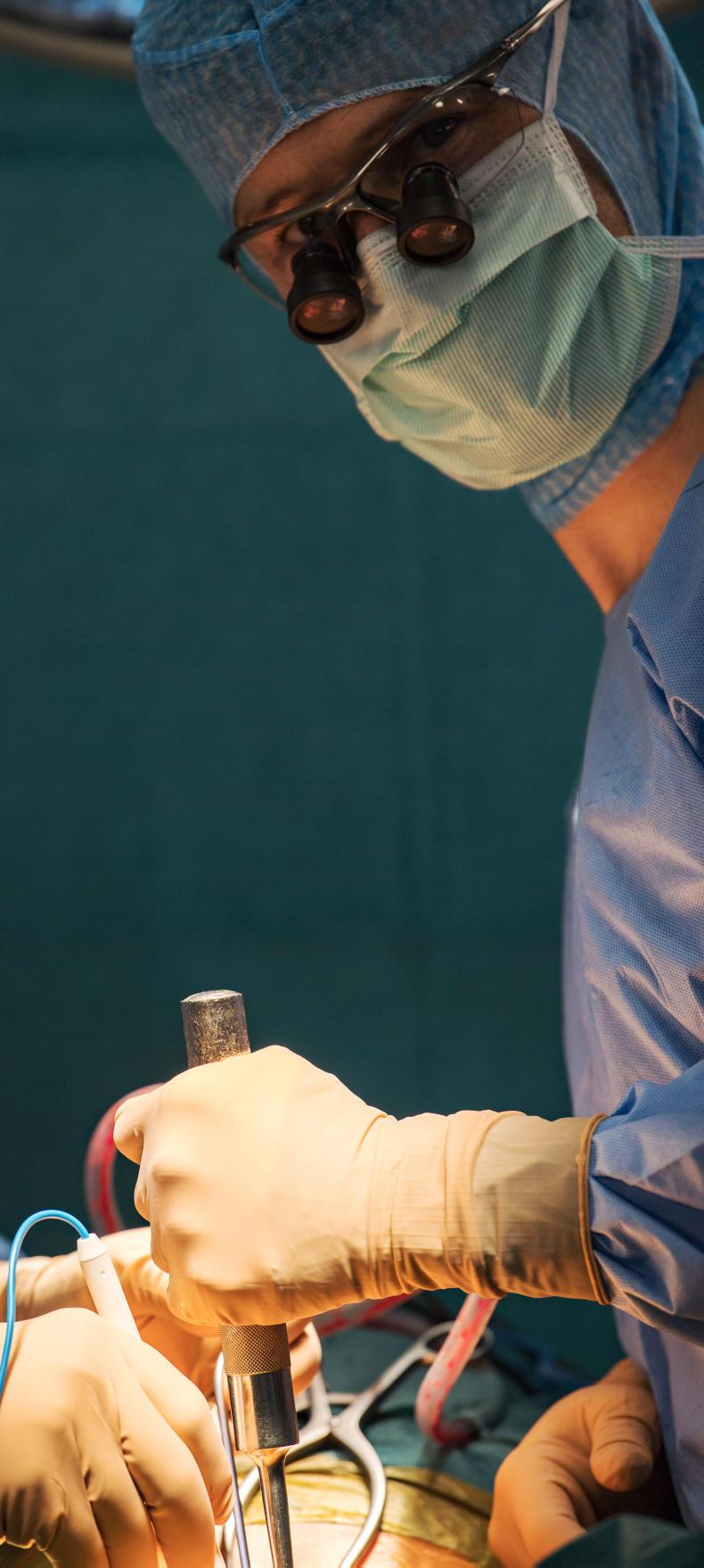Every working farmer requires a healthy back to keep up with the daily heavy demands of farming. Of all musculoskeletal complaints, back pain remains the most prevalent. Data shows that 32% of farmers experienced back pain in the previous year, compared with 16% of the general Irish population. The types of back problems seen in farming have changed over the last 50 years as the work has become more automated. Diagnoses have increased with better X-rays and scans. Treatments have become more focused on rehabilitation and injury prevention and less on traditional medications. Next week’s article will deal with treatment options which are available for spine problems.

Derek Cawley, consultant spine surgeon to discuss common back problems seen in farming and the solutions that may help.
What kind of back pain problems do you see in farming in recent times?
“The nature of back-related complaints have changed over the last 50 years due to changes in the individual and in the workplace. Significant variations exist between the tasks required in dairy versus beef, sheep, tillage, mixed or other farmers. In general, it has always been a source of pride how much can be achieved by our ability to tackle demanding physical tasks such as heavy lifting and manual labour. But these activities come at a cost.
“Farming is one of the industries with the most exposure to heavy physical loads; working in crouched or stooped positions, risk of falls on slippery and uneven walkways, poor lighting and risk of accidents caused by the unpredictable actions of livestock or incorrect use of machinery. Three-quarters of those with back pain attribute it to either a specific farm injury or repeated work activities, usually involving lifting. Older farmers that attend my clinic often look back and acknowledge the naïvety of performing these onerous tasks.”
What frequent hazards do you come across that are causing back pain?
Attaching a trailer hitch without using the hand crank.Filling diesel drums into the tractor or lifting bags of fertiliser. Lifting the vacuum tanker suction hose out of the slurry tank.Spending excess time sitting on the tractor.Manual handling of livestock.What effects do you see on a person’s life?
“The cost of back pain is estimated at 20% of income. If the back pain extends down the leg and persists for longer than three months, then often the symptoms are more difficult to manage, they can affect sleep and even walking. Often one can develop a fear or reluctance to move based on fears or worries of further harming their back. Painkillers can cause their own side effects. Those who do not recover from chronic back pain, may also suffer significant effects on their livelihood, relationships, self-respect and physical health.”
Is there any ongoing work looking at improving farming related back pain?
“Tasks are becoming increasingly automated and with it come different challenges. Fortunately, ergonomics (the study of humans at work) has improved to suit our backs. Despite a lot of research, there is little direct evidence supporting the benefits of ergonomic interventions for the management of low-back pain. It is commonly agreed that physical factors such as stooping or rotating while lifting or exposure to heavy vibration can impact on maintaining and protecting a healthy back.
“High levels of physical activity are reported to be risk factors for back pain. While those who have little or no physical activity, are found to be at risk of back pain, moderate levels of activity appear to protect the back.”
What would you suggest for improving these risk factors?
"Training for health and safety is routinely available through most public bodies, such as Farm Relief Services or the Health and Safety Authority. With better working routines, we can eliminate heavy lifting, switch around work tasks to reduce repetitive work, limit the maximum time spent doing specific tasks and ensure enough resting time between tasks. Mechanising the farm will ease demands on the back. Today’s animals, particularly livestock are more numerous and less familiar with human interaction so proper stock handling facilities are a must to minimise risk to both animals and humans.
"Exercise is highly recommended as a prevention for back pain. A recent study by Waterford IT showed high levels of obesity in farmers and with increasing levels of mechanised farming techniques, it is important to ensure regular exercise to offset the risk of back pain."
What trends do you see with today’s farmers?
“Today’s financial pressures result in many farmers working a second job. When time for work is limited, risk taking, short cuts and accidents occur more often. Better planning can offset this, which will limit risks but most importantly protect one’s back in the long term. This is more relevant today than ever, as the average age of farmers is now almost 60, with less younger farmers doing the job than before. Older farmers, particularly females, may suffer a fragility fracture when performing heavy manual tasks. These are common in osteoporosis and while they usually heal without difficulty, they can result in a mild stoop which can slowly worsen over time. While a slipped disc may occur in those under 40, spinal arthritis is more likely to affect those over 60 years.”

Mr Derek Cawley.
Mr Derek Cawley is a spinal surgeon working in full-time private practice in Dublin. Further information on referral
to his clinics are available on
www.thespineacademy.ie
In next week’s article, Mr Cawley will be reviewing options for treating spinal conditions in farming.
Every working farmer requires a healthy back to keep up with the daily heavy demands of farming. Of all musculoskeletal complaints, back pain remains the most prevalent. Data shows that 32% of farmers experienced back pain in the previous year, compared with 16% of the general Irish population. The types of back problems seen in farming have changed over the last 50 years as the work has become more automated. Diagnoses have increased with better X-rays and scans. Treatments have become more focused on rehabilitation and injury prevention and less on traditional medications. Next week’s article will deal with treatment options which are available for spine problems.

Derek Cawley, consultant spine surgeon to discuss common back problems seen in farming and the solutions that may help.
What kind of back pain problems do you see in farming in recent times?
“The nature of back-related complaints have changed over the last 50 years due to changes in the individual and in the workplace. Significant variations exist between the tasks required in dairy versus beef, sheep, tillage, mixed or other farmers. In general, it has always been a source of pride how much can be achieved by our ability to tackle demanding physical tasks such as heavy lifting and manual labour. But these activities come at a cost.
“Farming is one of the industries with the most exposure to heavy physical loads; working in crouched or stooped positions, risk of falls on slippery and uneven walkways, poor lighting and risk of accidents caused by the unpredictable actions of livestock or incorrect use of machinery. Three-quarters of those with back pain attribute it to either a specific farm injury or repeated work activities, usually involving lifting. Older farmers that attend my clinic often look back and acknowledge the naïvety of performing these onerous tasks.”
What frequent hazards do you come across that are causing back pain?
Attaching a trailer hitch without using the hand crank.Filling diesel drums into the tractor or lifting bags of fertiliser. Lifting the vacuum tanker suction hose out of the slurry tank.Spending excess time sitting on the tractor.Manual handling of livestock.What effects do you see on a person’s life?
“The cost of back pain is estimated at 20% of income. If the back pain extends down the leg and persists for longer than three months, then often the symptoms are more difficult to manage, they can affect sleep and even walking. Often one can develop a fear or reluctance to move based on fears or worries of further harming their back. Painkillers can cause their own side effects. Those who do not recover from chronic back pain, may also suffer significant effects on their livelihood, relationships, self-respect and physical health.”
Is there any ongoing work looking at improving farming related back pain?
“Tasks are becoming increasingly automated and with it come different challenges. Fortunately, ergonomics (the study of humans at work) has improved to suit our backs. Despite a lot of research, there is little direct evidence supporting the benefits of ergonomic interventions for the management of low-back pain. It is commonly agreed that physical factors such as stooping or rotating while lifting or exposure to heavy vibration can impact on maintaining and protecting a healthy back.
“High levels of physical activity are reported to be risk factors for back pain. While those who have little or no physical activity, are found to be at risk of back pain, moderate levels of activity appear to protect the back.”
What would you suggest for improving these risk factors?
"Training for health and safety is routinely available through most public bodies, such as Farm Relief Services or the Health and Safety Authority. With better working routines, we can eliminate heavy lifting, switch around work tasks to reduce repetitive work, limit the maximum time spent doing specific tasks and ensure enough resting time between tasks. Mechanising the farm will ease demands on the back. Today’s animals, particularly livestock are more numerous and less familiar with human interaction so proper stock handling facilities are a must to minimise risk to both animals and humans.
"Exercise is highly recommended as a prevention for back pain. A recent study by Waterford IT showed high levels of obesity in farmers and with increasing levels of mechanised farming techniques, it is important to ensure regular exercise to offset the risk of back pain."
What trends do you see with today’s farmers?
“Today’s financial pressures result in many farmers working a second job. When time for work is limited, risk taking, short cuts and accidents occur more often. Better planning can offset this, which will limit risks but most importantly protect one’s back in the long term. This is more relevant today than ever, as the average age of farmers is now almost 60, with less younger farmers doing the job than before. Older farmers, particularly females, may suffer a fragility fracture when performing heavy manual tasks. These are common in osteoporosis and while they usually heal without difficulty, they can result in a mild stoop which can slowly worsen over time. While a slipped disc may occur in those under 40, spinal arthritis is more likely to affect those over 60 years.”

Mr Derek Cawley.
Mr Derek Cawley is a spinal surgeon working in full-time private practice in Dublin. Further information on referral
to his clinics are available on
www.thespineacademy.ie
In next week’s article, Mr Cawley will be reviewing options for treating spinal conditions in farming.








 This is a subscriber-only article
This is a subscriber-only article






SHARING OPTIONS: